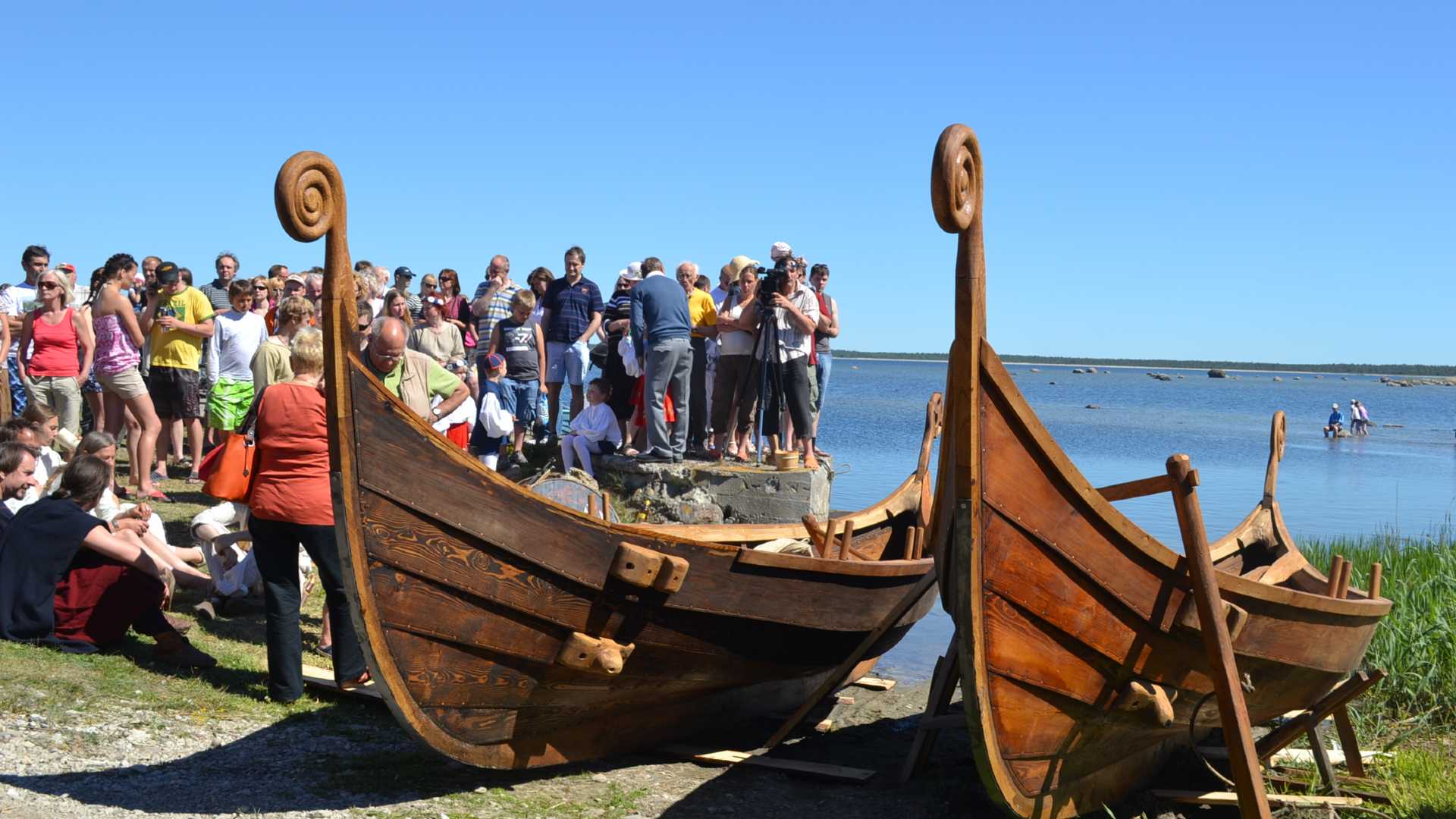There is a palpable team spirit involved in the building of these boats, too. In 2011, Kreem collaborated with MTÜ NordEstNõva, whose motto is “Ühtususes peitub jõud” (“there is strength in unity”). In fact, because Eesti Viikingid and NordEstNõva are non-profit organizations, it has become a very community-based endeavour. The Viking boats they have made are part of a broader mission to enrich Nordic communities through involvement in hands-on activities, of which boat-building is one part.
It was in the autumn of 2005 that Norwegians from the town of Risør visited Nõva, sparking interest in the idea of a community association. This connection is also reflected in the decision to work with Anti to make boats similar to Norwegian Viking fjord boats from the 10th century CE. Between the Norwegian visitors, Eesti Viikingid, and NordEstNõva, there was a mutual interest in seafaring heritage and practical skills.
Anti Kreem, Peeter Jõgar, and their team of boat builders may use power tools to help them make these fierce boats, but the designs closely resemble what would have been gliding around the coasts of the Baltic Sea back in the day.
Viking boats were constructed with heavy planks of wood, rather than opting for a craft like the light and maneuverable birchbark canoes of Indigenous Canadians. Allowing a heavy boat like this to float requires metal and dependable reinforcing structure. First, local wood is milled and cut into planks. The planks are bent into precise curvature, fit together with copper nails, and strengthened with bows that go across the width of the boat's hull. One of Kreem and NordEstNõva's creations, Thule, is 6.7 metres long, with oar ports that are fine-tuned to the movements of the oars, as well as a rounded and carved front stempost. A mast and sail were added, though this wasn't a typical Viking feature, so it could move with the help of the wind. The final touches involve brushing varnish on the entirety of the boat and intentionally filling the boat up with water, so that any gaps in the wooden planks close tightly together. You must be humble and patient before you can glide proudly across the water.
As with most Viking boats, this variety wasn't intended for use on the open ocean or sea. The boats would usually hug the coastline and come in and out of fjords, which was useful for rapid raids and skirmishes. The crews would row from place to place, taking turns every 8 kilometres or so. At times, they could have been rowing away under raining arrows from coastal defences. In 2008 and 2010, archaeologists on the coast of Saaremaa discovered Scandinavian ships with arrowheads embedded in their sides, presumably from arrows shot by the Oeselians of Saaremaa.
A hand-crafted rowboat can work just as well for a leisurely paddle, too, just as the people of Nõva have enjoyed when some of these boats were finished. Their increased width allows for more stability, which would come in handy for fishing.
While there's no store front for you to go in and buy a wooden boat like this in Estonia, you can learn boat building skills in a hands-on way from Eesti Viikingid's workshops. Likewise, you can contact NordEstNõva at nen@nordestnova.org to access more info regarding their boat expeditions and community activities. They both welcome and encourage participants from all over to make fun memories… and boats!
This article was written by Vincent Teetsov as part of the Local Journalism Initiative.




